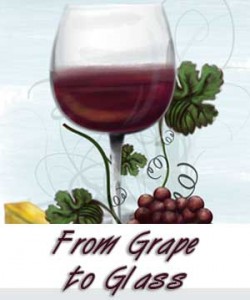You don’t have to be an expert to enjoy a wine tasting
By Doug Zimmerman, Columnist, The Times
 Tasting wine has the unfair reputation of being an intimidating, high maintenance endeavor for the inexperienced. Believe me, this does not have to be the case. Wine bars and wineries are growing in popularity, and the culture is becoming more mainstream than in the past. Don’t sweat it.
Tasting wine has the unfair reputation of being an intimidating, high maintenance endeavor for the inexperienced. Believe me, this does not have to be the case. Wine bars and wineries are growing in popularity, and the culture is becoming more mainstream than in the past. Don’t sweat it.
It’s important to remember that everyone’s palate and preferences are different. If you do not like a wine, you are not wrong. We all have our favorites.
The following guide will have you enjoying the nuances of tasting and evaluating wine like a boss in no time.
1. Appearance.
Wine should be visually evaluated in a well-lit area. Tilt the glass and hold against a white or light background, or up to the light. Is it clear? If it’s hazy, it may reveal a fault in the wine or a tainted bottle.
The color of the wine is a clue of the grape variety and may give hints of the age of the wine. White wines such as Chardonnay or Pinot Grigio can be a pale lemon color when young, but as they age, take on more of a gold tone. Red wine can range from purple when young to shades of brown after a long aging process.
Does the wine stick to the sides of the glass? This is known as tears or legs, and is an indicator of higher alcohol content.
2. Aromas.
Swirl the wine around in the glass to release the aromas. Don’t be afraid to put your nose right in the glass and get a good whiff of the wine. What fragrances are you getting? Fresh fruits? Vanilla, oak or currants? How intense are those aromas? These traits will usually be indicative of the flavors you will pick up when tasting the wine.
If the wine is faulty, the aroma is where it will be most obvious. The smell of wet newspaper is a dead giveaway of a bad (or “corked”) bottle of wine.
3. Taste.
This is the best part. Take a sip of the wine and let it coat your tongue. What flavors do you pick up? Are they the same as the aromas? Is the wine dry or sweet?
Acidity is the level of sourness, or how much the wine makes your mouth water. Is the wine more or less acidic? In some red wines, tannins are present. Tannins come from the grape skins and create a dry and bitter sensation on the tongue. They also assist in the aging of the wine.
4. Finish.
This is how long the presence of the wine lingers in your mouth after drinking. Was it long or short? Was it pleasant or harsh?
Based on all of the above, what is your assessment? Remember, you like what you like. Be true to your palate. It’s likely that over time, your preferences could change.
Here’s a link to a sample tasting sheet, courtesy of Wine Spectator: http://ow.ly/uRXLZ
Tasting wine is like anything else. The more you do it, the better and more confident you get. My suggestion is to keep tasting. Fair warning though, you may get hooked.
Thanks for reading!
Doug Zimmerman has been hosting Uncorked Remarks, a wine blog focusing on the local wine scene since 2010. He is pursuing the Diploma of Wine & Spirits from the London-based Wine & Spirits Education Trust. Stop by www.uncorkedremarks.com and remember to relax, it’s just wine.




